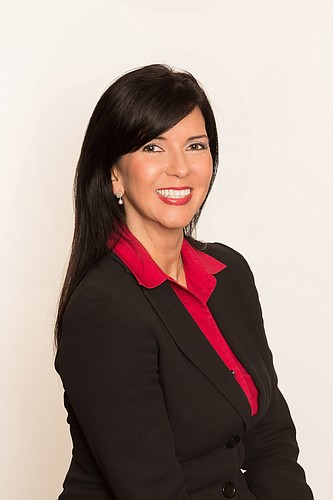- November 24, 2024
-
-
Loading

Loading

JULIA SILVA RETTIG
Senior Director, Tampa Industrial Team
Cushman & Wakefield
Tampa
Julia Rettig oversees commercial real estate brokerage firm Cushman & Wakefield’s industrial team in Tampa, which also represents properties throughout the Interstate 4 corridor. Last year, the industrial team either sold or leased five million square feet of space in more than 85 separate transactions. Rettig has been involved with Tampa-area commercial real estate since 1992, working for industrial developers and investors Liberty Property Trust, Duke Realty Corp. and Prologis. Her clients have included Cabot Properties, Exeter Property Group, Keating Resources, McCraney Property Co. and TriGate Capital. She spoke to the Business Observer about the burgeoning phenomenon of “last-mile distribution,” also known as “same-day delivery.”
Define “last mile distribution” for us.
Last-mile distribution is simply a roll of fulfillment, and it’s arisen because retailers or suppliers, say, who traditionally would work out of bricks and mortar stores alone are today having the challenge of keeping up with customers who want products delivered to their doors in the same day they purchase them. Last-mile users, generally, are looking to occupy buildings near an urban core. They want to be as close to a dense population as possible, whereas a traditional distributor could be in the middle of a state.
How is last-mile distribution changing the logistics and industrial real estate business?
I’d suggest that last-mile distribution isn’t changing the business so much as mobile phones have changed it, because they have fueled the rise of e-commerce and similar trends, which have, in turn, led to last-mile distribution. Consumers are buying differently today and the way products are getting to customers is constantly evolving. In the past, companies leasing distribution space were concerned only with how many trucks would utilize their facility. Today, the conversation often centers around multiple modes of transportation. Amazon, for instance, uses what they call “flex” drivers who transport goods in cars. So today’s distribution buildings need to be considerate of different kinds of vehicular parking and access. That means developers have to buy more land to accommodate those modalities. With last-mile distribution, there’s often vcry little product in a building, because it’s constantly being put on the road. Turnover as a result is very different; what used to sit in a warehouse for weeks or even months is now shipped daily.
What does last-mile distribution mean for investors?
Investors who are buying real estate can today buy properties that were never sexy before but, if they’re close to an urban core, they can make them relevant again. If it’s close to a population center, you don’t need all the bells and whistles, so investors can purchase older properties and make a great return. The other thing about last mile is users often don’t need elaborate racking systems the way many used to, and still do. But users do need more land to accommodate trailer storage, and most are willing to pay a little more in rent to get it.
What about building specs?
With last-mile properties, you don’t have to have 36-foot clear ceiling heights, but the exception there is, of course, if you hope to sell the property at some point to an institutional-grade buyer it will have to meet certain specifications, like ceiling height. Developers are still building 36-foot clear and 40-foot clear buldings, and in some markets, like Seattle and Miami, very densely populated places, we’re even seeing two-story distribution centers. Some users don’t need that height, but if you want to develop a multigenerational building, you’ll want it to contain as many attractive attributes as possible for the widest swath of buyers.
What are some examples of last-mile distribution buildings along the Gulf Coast operating today?
Cushman & Wakefield represents Amazon, and when they came in with their last-mile requirements they wanted 100,000-square-foot increments in both Pinellas County and in Tampa, and for that they chose existing properties. They took older Class B product and retrofitted it to accommodate their requirements. But DHL, UPS, FedEx, Lasership, they’re all examples of companies that do last-mile delivery and distribution. Ikea, Quaker Oats, a number of companies also do last-mile distribution from their facilities in the area. One of the newer projects we’re working with is the Tampa Fulfillment Center, from Keating Resources, on Clark Street. It’s designed to be a last-mile facility, with heavier vehicular parking. Keating also took down three additional acres than it needed to attract last-mile users, and one feature is the building’s design actually allows for cars to drive through the building to get products. It’s one of the first of its kind in the country, and we’re getting some really strong interest on it now.
What’s the future of last-mile distribution look like?
It’s evolving so much, and so fast, that it’s hard to say. What Keating is doing is what the future should be. I think last-mile designed buildings will be built more and more, and robotics has the potential to really change everything. Eventually, I expect we’ll see more multistory industrial properties, but at least for now, Tampa doesn’t have the population to warrant it, and there’s enough land still available.